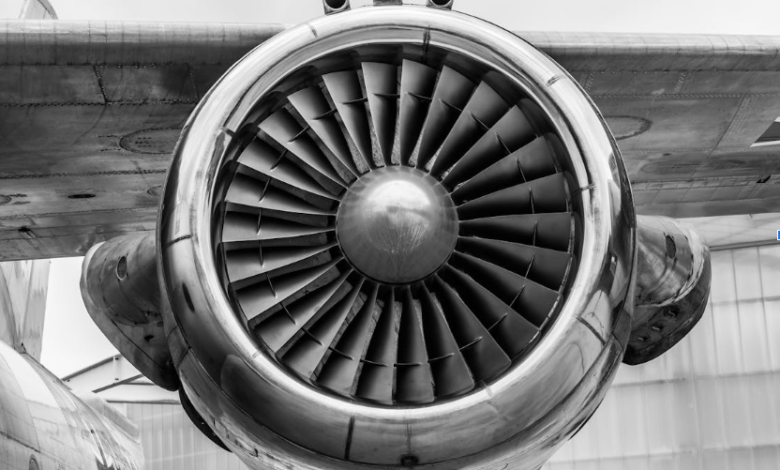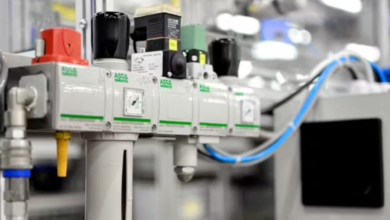From Heat to Efficiency: The Critical Role of Turbine Section Coatings

Modern turbines—whether in jet engines, gas-fired power plants, or steam-driven facilities—operate under some of the harshest conditions known to engineering. Extreme temperatures, high rotational speeds, corrosive environments, and constant mechanical stress create an environment where unprotected components would degrade rapidly. This is where turbine section coatings play a vital role.
Turbine coatings are engineered layers applied to the blades, vanes, and other hot-section components of turbines. These coatings act as protective barriers, ensuring that turbines can operate efficiently, safely, and for longer durations. Their contribution is so significant that advancements in coating technologies are often directly tied to improvements in turbine efficiency and performance.
This article explores the science, types, applications, and future of turbine section coatings, as well as their economic and environmental impacts.
Why Turbine Section Coatings Are Essential
Turbine hot sections are exposed to environments where temperatures often exceed 1,200°C (2,192°F) in gas turbines and even higher in advanced jet engines. Such conditions cause:
- Oxidation: Metal surfaces react with oxygen, forming oxides that weaken the structure.
- Corrosion: Sulfur, salts, and other impurities in fuels accelerate material degradation.
- Erosion: High-velocity particles strike turbine surfaces, wearing them down.
- Thermal Fatigue: Constant heating and cooling cycles create stress cracks.
Without specialized coatings, even advanced superalloys would fail prematurely. Coatings allow turbines to operate at higher temperatures, which directly improves thermal efficiency, reduces fuel consumption, and lowers emissions.
Types of Turbine Section Coatings
Different turbine sections and operating conditions require specialized coatings. The most common categories include:
1. Thermal Barrier Coatings (TBCs)
- Function: Protect turbine components from extreme heat by providing insulation.
- Composition: Usually made of yttria-stabilized zirconia (YSZ) applied over a metallic bond coat.
- Application: Plasma spraying or electron-beam physical vapor deposition (EB-PVD).
- Benefit: Allows turbine inlet temperatures to be raised without damaging the base material, improving efficiency.
2. Environmental Barrier Coatings (EBCs)
- Function: Protect ceramic matrix composites (CMCs) from oxidation and moisture.
- Application: Used primarily in next-generation turbines that employ lightweight ceramic components.
- Benefit: Extends component life in harsh, high-moisture environments.
3. Metallic Coatings
- Types: Diffusion aluminide coatings, MCrAlY (where M = nickel, cobalt, or both).
- Function: Provide oxidation and hot corrosion resistance.
- Benefit: Form protective oxide layers (alumina) that prevent further material degradation.
4. Abradable and Clearance Control Coatings
- Function: Applied to casing or blade tips to minimize clearances between rotating and stationary parts.
- Benefit: Enhances efficiency by reducing leakage of working fluid around turbine blades.
5. Erosion-Resistant Coatings
- Function: Protect surfaces from sand, ash, or particulate erosion in harsh operating environments.
- Common Use: Aviation turbines and turbines in desert or coastal regions.
See also: Why You Should Always Check Your WhatsApp Web Login Activity
Applications of Turbine Coatings
Gas Turbines in Power Plants
Power plants rely heavily on turbine coatings to maintain efficiency and availability. Coatings allow gas turbines to run at higher firing temperatures, thus increasing power output and efficiency while reducing fuel consumption.
Jet Engines in Aerospace
In aerospace, coatings enable engines to sustain higher thrust while reducing weight and fuel burn. This is crucial for both commercial aviation, which seeks efficiency, and military aviation, which demands extreme performance.
Steam Turbines
Though steam turbines operate at lower temperatures than gas turbines, coatings are still applied to combat erosion from water droplets, corrosion from steam impurities, and general wear.
Renewable Energy Turbines
Coatings are increasingly used in wind turbines, where blades are exposed to rain, salt spray, and sand erosion. Protective coatings significantly extend service intervals and improve overall reliability.
Methods of Applying Turbine Coatings
Several advanced techniques are used to apply coatings with precision and durability:
- Plasma Spray Coating
- Uses ionized gas to melt coating material, which is then sprayed onto the turbine surface.
- Common for thermal barrier coatings.
- Uses ionized gas to melt coating material, which is then sprayed onto the turbine surface.
- Electron Beam Physical Vapor Deposition (EB-PVD)
- Produces columnar microstructures with excellent strain tolerance.
- Preferred in aerospace for high-performance applications.
- Produces columnar microstructures with excellent strain tolerance.
- Chemical Vapor Deposition (CVD)
- Gases react chemically on the surface to form thin, uniform coatings.
- Gases react chemically on the surface to form thin, uniform coatings.
- Diffusion Coating
- Atoms of coating material diffuse into the surface metal, forming a bonded protective layer.
- Atoms of coating material diffuse into the surface metal, forming a bonded protective layer.
- High-Velocity Oxy-Fuel (HVOF) Spraying
- Applies dense, erosion-resistant coatings using a high-speed gas stream.
Benefits of Turbine Section Coatings
- Extended Component Life: Reduces wear, oxidation, and corrosion.
- Higher Efficiency: Enables operation at elevated temperatures, improving thermal performance.
- Cost Savings: Reduces downtime, maintenance costs, and need for component replacements.
- Environmental Advantage: Improves fuel efficiency and lowers greenhouse gas emissions.
- Operational Reliability: Ensures turbines can run continuously under demanding conditions.
Challenges in Turbine Coating Technologies
Despite their advantages, turbine coatings come with challenges:
- Complex Manufacturing: Advanced application techniques require high precision and specialized equipment.
- Cost: Development and application of high-performance coatings can be expensive.
- Degradation Over Time: Coatings themselves can crack, spall, or erode under stress, necessitating regular inspection.
- Compatibility Issues: Coating performance depends on the bond with substrate materials, requiring careful design.
- Environmental Constraints: Certain coating processes produce emissions or require hazardous materials.
Future of Turbine Section Coatings
Research in materials science and nanotechnology is rapidly advancing turbine coating capabilities. Some promising directions include:
- Next-Generation Thermal Barrier Coatings: Using rare-earth zirconates or novel ceramic composites for higher temperature resistance.
- Smart Coatings: Self-healing coatings that repair minor cracks automatically.
- Nanostructured Coatings: Offering improved toughness, erosion resistance, and thermal insulation.
- Eco-Friendly Processes: New methods that reduce environmental footprint during coating application.
- Digital Twins for Coating Management: Using predictive analytics and AI to forecast coating degradation and optimize maintenance schedules.
As the energy industry pivots toward higher efficiency and lower carbon emissions, coatings will be indispensable in pushing the boundaries of what turbines can achieve.
Economic and Environmental Impact
Economic Perspective
- Longer-lasting turbines reduce maintenance costs and extend plant uptime.
- Improved efficiency means higher power output per unit of fuel consumed, translating into better profitability.
- Aerospace companies save billions in fuel costs thanks to coatings that enable lean-burn, high-temperature engines.
Environmental Perspective
- Coatings indirectly reduce CO₂ emissions by enhancing efficiency.
- Advanced coatings make renewable turbines more reliable, supporting clean energy adoption.
- Some next-generation coatings are being designed with sustainability in mind, reducing reliance on rare or toxic materials.
Conclusion
Turbine section coatings are unsung heroes in the modern energy and aerospace industries. They allow turbines to function under extreme conditions, push efficiency boundaries, reduce environmental impact, and ensure reliability in mission-critical applications.
As technologies continue to evolve, coatings are becoming smarter, tougher, and more sustainable. From thermal barriers that protect gas turbines to erosion-resistant layers on wind turbine blades, coatings are central to the future of global energy and transportation.
In a world demanding ever-greater efficiency and cleaner energy, turbine section coatings are not just protective layers—they are enablers of progress, extending the life of critical infrastructure and paving the way for a more sustainable future.



